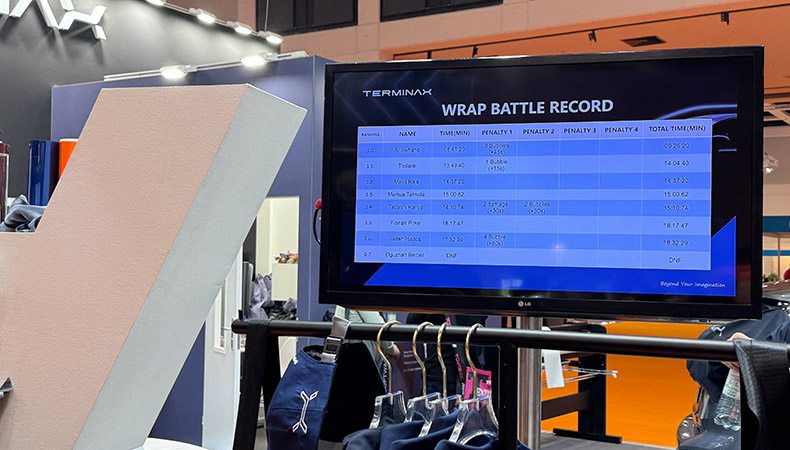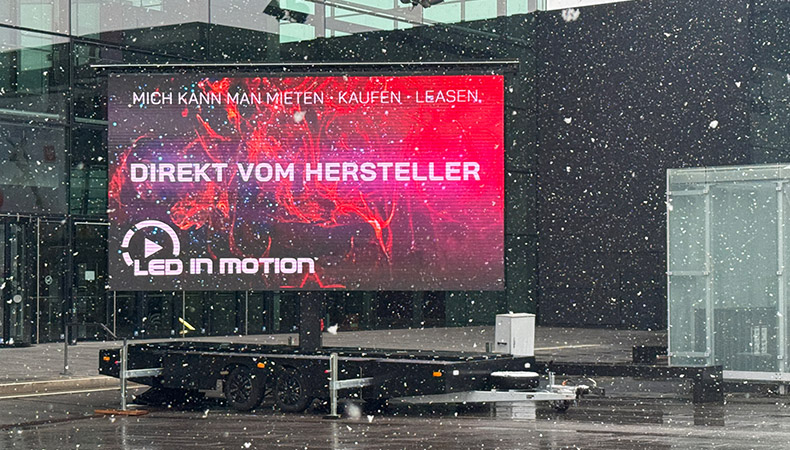This guide helps printers enter the growing Digital Signage market. Sonja Angerer stresses that dynamic content requires new employee skillsets like video editing. Printers must consider the specialized hardware, software, and infrastructure needed, as well as challenges like maintenance, security, and sustainability. Success requires careful planning and investment to leverage this new revenue stream.
 CAPTION: Luxury brands have been opting for Digital Signage instead of large format print in department stores and boutiques in recent years. Image Credit: Sonja Angerer.
CAPTION: Luxury brands have been opting for Digital Signage instead of large format print in department stores and boutiques in recent years. Image Credit: Sonja Angerer.
Digital Signage is one of the fastest growing segments of the advertising industry as major brands are increasingly opting for screens instead of print applications. For many printers, it could therefore be crucial to expand their services to Digital Signage.
Digital Signage: A change of directions
In order to get started with Digital Signage, print shops regardless of size must first adapt to the medium. Because the biggest difference between print and Digital Signage is the type of content. Printed materials are static and immutable.
Screens can also be used for static content. But the big advantage of Digital Signage is the ability to display dynamic content such as videos and animations. This allows for advertising to be adapted to different target groups and situations. Moving images also attract more attention than static content. Often, brands also ask for additional interactive advertising applications through touchscreen, Bluetooth or even a simple QR code.
However, for printers looking to expand their business into Digital Signage, this means that employees will have to learn a whole new skillset such as video editing, animation or creating user interfaces. For designers who have been trained for static content only, this means a significant change of directions.
 CAPTION: Digital Signage is particularly suitable for displaying dynamic motifs and information. Image Credit: Sonja Angerer
CAPTION: Digital Signage is particularly suitable for displaying dynamic motifs and information. Image Credit: Sonja Angerer
Business areas in Digital Signage
To successfully enter the Digital Signage markets, not only the creation and content departments need to re-evaluate their work. Digital Signage requires special hardware and software as well as rock-solid infrastructure:
- Displays and screens: High-quality screens are at the core of any Digital Signage application. They must be robust, energy-efficient and durable. Depending on the location, outdoor displays with weatherproof housings may be required.
- Media players: These devices control the content that is displayed on the screens. Popular options include mini-PCs or specialised Digital Signage players.
- Software: Easy-to-use content management software is crucial. It should offer functions such as scheduling, remote control and analysis. Cloud-based solutions also make it easy to manage content across multiple locations.
- Mounting systems: Depending on the location and screen size, different brackets and stands are required. These should be stable and flexible to ensure optimal visibility.
- Network and power supply: A reliable internet connection is necessary to update and control content. In addition, power supply and cabling should be carefully planned to avoid failures.
For printers who want to expand into Digital Signage business, the question arises which services they want to offer themselves or rather together with partners? What about other additional IT services, such as connecting the display ads to an ERP system?
It may be more feasible for printers to focus on content creation or customisation for Digital Signage for a while or even permanently. Further services can be added as needed.
 CAPTION: Even challenging weather conditions are often not a problem for Digital Signage anymore. Image Credit: Sonja Angerer
CAPTION: Even challenging weather conditions are often not a problem for Digital Signage anymore. Image Credit: Sonja Angerer
Don’t underestimate the challenges of Digital Signage
As exciting and potentially rewarding as working with Digital Signage may be for a printer, its challenges should also not be underestimated:
- Sustainability: Printers whose customers value sustainability may be reluctant to use electronic ads. In fact, screens may have a significantly lower CO2 footprint per advertising contact than a print product but only when set up to be energy efficient.
- Maintenance: With the delivery of print products or static advertising systems, the work of a printer or sign-maker is usually done. However, Digital Signage requires regular maintenance, e.g. through software updates.
- Security: Digital Signage must be protected against vandalism but also cyberattacks. Like regular maintenance, these costs should already be considered in the calculation of the project.
- Legal requirements: Many countries have specific regulations for Digital Signage, especially in public spaces, e.g. screen brightness, the type of content displayed and also privacy regulations.
Starting with Digital Signage: have a plan
Entering the Digital Signage world offers printers the opportunity to expand their business and create new revenue streams. However, it also requires careful planning and investment in the right technology and training.
By considering the differences between print and Digital Signage, selecting the right accessories and overcoming the potential challenges, printers can successfully enter this dynamic market and reap the numerous benefits.